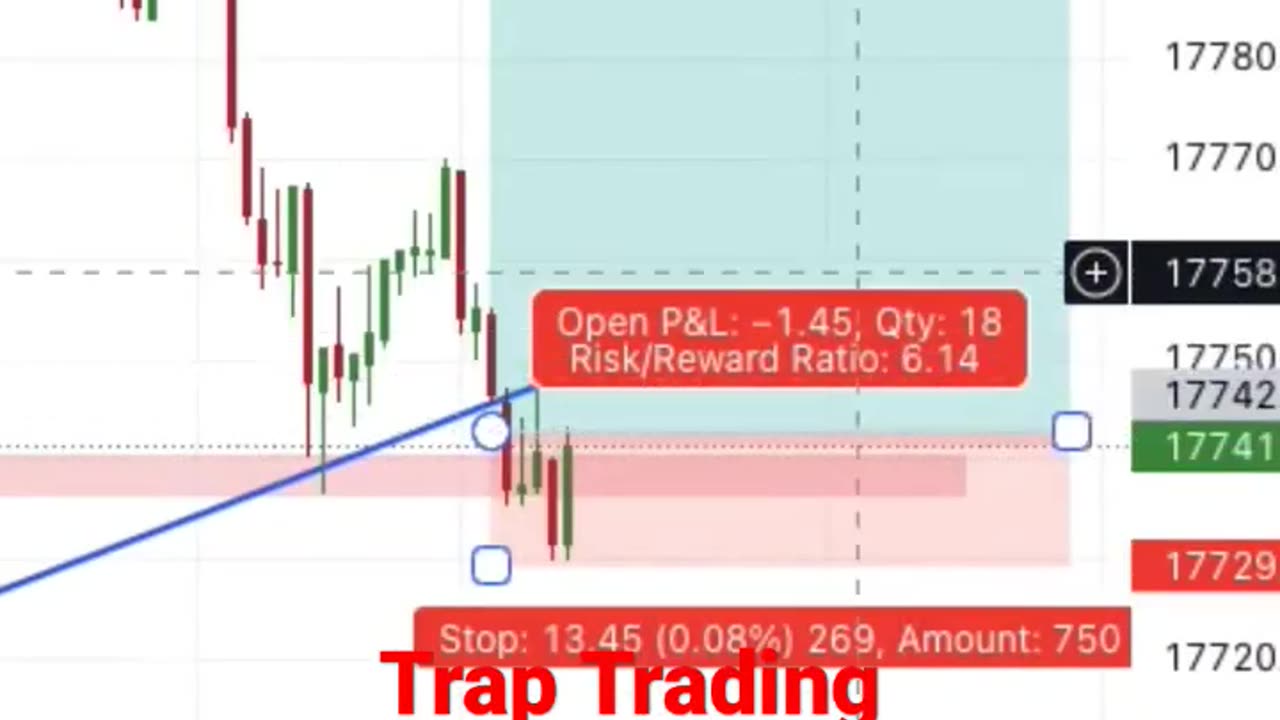Premium Only Content

Trap Trading
Trapped trading refers to a situation in the financial markets where traders find themselves in a position where they are unable to exit their trades due to unfavorable market conditions or unforeseen circumstances. It is characterized by a lack of liquidity or significant price movements that prevent traders from executing their desired trades or closing existing positions.
Trapped trading can occur in various financial markets, including stocks, bonds, commodities, or currencies. It often arises during periods of extreme volatility, economic crises, or sudden market disruptions. For example, a sharp and unexpected decline in stock prices may lead to a large number of investors trying to sell their holdings simultaneously, causing a bottleneck in the market and making it difficult to find buyers.
One of the primary causes of trapped trading is the lack of liquidity. When there are fewer buyers or sellers in the market, it becomes challenging to match orders, leading to delays or even complete inability to execute trades at desired prices. Traders may find themselves stuck in positions they wish to exit, resulting in potential losses or missed profit opportunities.
Another factor contributing to trapped trading is the presence of circuit breakers or trading halts imposed by regulatory authorities. These mechanisms are designed to curb excessive market volatility by temporarily suspending trading when preset thresholds are breached. While they serve to stabilize markets, they can also trap traders who are unable to trade during these halted periods.
Furthermore, trapped trading can occur due to technological glitches or failures. In today's highly automated and interconnected trading environment, even a minor disruption in trading platforms or communication systems can have significant implications. Traders may be unable to access their accounts, execute orders, or obtain real-time market data, leaving them effectively trapped in their positions.
The consequences of trapped trading can be severe for individual traders, institutional investors, and market participants as a whole. It can result in financial losses, missed investment opportunities, increased risk exposure, and erosion of market confidence. Trapped traders may experience heightened stress and uncertainty, as they are unable to react swiftly to changing market conditions or protect their positions effectively.
To mitigate the risks associated with trapped trading, traders and investors often employ various risk management strategies. These may include diversifying their portfolios, setting stop-loss orders to limit potential losses, utilizing hedging techniques, or closely monitoring market liquidity and volatility indicators.
Overall, trapped trading is a phenomenon that can significantly disrupt financial markets and impact market participants. It underscores the importance of risk management, adaptability, and preparedness in navigating volatile and unpredictable trading environments.
-
 4:30:22
4:30:22
Planet ShanChan Gaming
5 hours ago $0.34 earnedMinecraft with Maam!
15K -
 1:02:17
1:02:17
Sean Unpaved
3 hours agoTemperatures Rising In The NBA; March Madness Breakdown
28.4K2 -
 54:38
54:38
Ben Shapiro
3 hours agoEp. 2160 - The Case For Derek Chauvin | Episode 1: The Background
72.1K40 -
 1:05:16
1:05:16
Timcast
4 hours agoTrump DEMANDS Impeachment Of Judge Who BLOCKED TdA Deportation, Judge Claims EQUAL POWERS To Trump
259K228 -
 3:20:40
3:20:40
RawUncutTV
5 hours agoJango A Big Hunt : Monster Hunter Wilds
34.1K -
 5:21:52
5:21:52
SoundBoardLord
6 hours agoThe Red Dead Journey Continues (Island Paradise Episode)
36.6K -
 2:12:01
2:12:01
Steven Crowder
6 hours agoFrom Hunter Biden's Security to the JFK Files - How the Trump Admin is Exposing Deceit
662K479 -
 36:13
36:13
Plan ₿ Forum
7 days agoChris Pavlovski at P₿F El Salvador PODCAST
72.3K3 -
 1:58:33
1:58:33
The Charlie Kirk Show
3 hours agoInnovation Over Stagnation + The West vs. Islam | Miles, Sedra, Franklin | 3.18.25
113K15 -
 LIVE
LIVE
IrishBreakdown
4 hours agoNotre Dame Spring Preview - Irish Ready To Kick Off Important Spring
78 watching